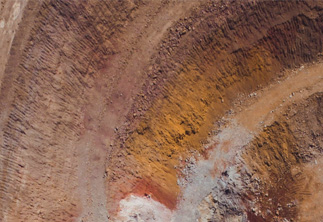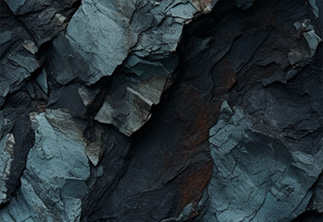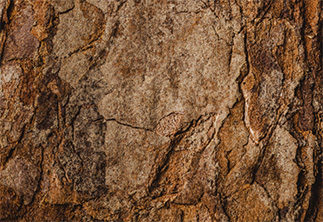Green Mineral Profile
Rare earth minerals
Overview
Overview
Key African countries involved in rare earth mineral production in 2021 included Madagascar, Burundi, South Africa, and Tanzania. South Africa and Tanzania together held 1.6 million tons of rare earth reserves, making up 2% of the global total. Madagascar was the sixth largest producer, contributing 6,800 metric tons (2%) of the global supply, while Burundi produced 200 metric tons.
Export data for African countries is scarce, but as of 2024, China processes 90% of the world's rare earth metals, suggesting it is the main recipient of African exports. Benchmark Mineral Intelligence indicates that 37% of Africa’s future rare earth supply is already committed to Chinese buyers, with the rest available for other markets. By 2029, eight new rare earth mines in Tanzania, Angola, Malawi, and South Africa are expected to start production, potentially contributing 9% to the global supply.

Rare earth mineral reserves
The major African countries involved in rare earth mineral production during 2021 included Madagascar, Burundi, South Africa and Tanzania.
South Africa and Tanzania together accounted for 1.6 million tons of global rare earth reserves, which represents 2% of total global rare earth reserves.
The top five countries with the largest share of rare earth reserves in 2021 were China (34%); Vietnam (17%); Brazil (16%); Russia (16%) and India (5%).
(890,000 tons)
(790,000 tons)
Rare earth mineral production
Madagascar was the sixth largest producer of rare earth minerals in 2021, with a production of 6,800 metric tons (2%).
Burundi was the eleventh largest producer of rare earth minerals in 2021, with a production of 200 metric tons (0.1%).
(6,800 tons)
(200)

Major rare earth
mining projects
 South Africa
South Africa
Rainbow Rare Earths, listed in London, possesses the Phalaborwa project in South Africa's Limpopo province. This project, estimated to hold 30.4 million tons of minerals, stands as one of the globe's most cost-effective producers of separated magnet rare-earth oxides. Currently, a prefeasibility study is in progress post the release of a preliminary economic assessment in October 2022, indicating promising economic prospects.
Steenkampskraal Monazite Mine is located 71 km north of Vanrhynsdorp in the Western Cape province of South Africa. A strategy has been developed to bring the mine into production. The strategy covers producing monazite concentrate with the construction of a monazite concentration plant, followed by the construction of a cracking plant to produce mixed rare earth carbonate and thorium. This will be followed by the construction of separation plant to produce mixed rare earth oxides. It has been reported that the mine is one of the highest-grade rare earths and thorium mines in the world.
The mine houses all fifteen rare earth metals and encompasses an existing project formerly owned and operated by Anglo American until 1963, with an estimated mineral resource of 15,630 tons of neodymium, 4,459 tons of praseodymium, 867 tons of dysprosium, and 182 tons of terbium. With one of the highest-grade rare-earth deposits globally, the mine is poised to produce 2,700 tons/year of TREO for over 20 years.
 Namibia
Namibia
Namibia Critical Metals, a Canadian-based mineral company, owns the Lofdal project in Namibia. With a production capacity of 2,000 tons/year of Total Rare Earth Oxide (TREO), the project has the potential to yield both dysprosium and terbium, highly valued rare earth metals globally. Namibia Critical Metals is collaborating with Japan Oil, Gas and Metals National Corporation to develop the project. Recently, the company signed a letter of intent with SGS Canada, a testing, inspection, and certification company, to initiate pilot plant testing on a five-tonne sample from the deposit.
 Angola
Angola
Pensana, headquartered in the UK, owns the Longonko rare earth metals project, an open-pit mine and flotation concentration plant situated in Angola. With an estimated mineral resource of 313 million tons, the project is anticipated to produce 40,000 t/y, processed at a refinery in the UK. In 2022, Pensana initiated the construction phase of the project, which boasts a lifespan of 20 years.
 Uganda
Uganda
Ionic Rare Earths, an Australian company, is developing Uganda's Makuutu rare earth metals project, spanning six licenses over an area of 298 km². The project, with a total mineral resource estimate of 532 million tons, published the feasibility study for its first phase in March 2023. This phase anticipates production of 1,300 tons/year over the initial ten years and 1,160 tons/year over 35 years. Approval for the demonstration plant was granted by Uganda's Ministry of Energy and Mineral Development in April 2023.
 Tanzania
Tanzania
Peak Rare Earths, an Australian entity, is advancing the Ngualla Rare Earth project in Tanzania, housing one of the largest high-grade and low-cost Neodymium Praseodymium rare earth deposits globally. With an estimated mineral resource of 18.5 million tons, resources are set to undergo processing at a concentration plant on site. A bankable feasibility study was finalized in October 2022, while a strategic cooperation agreement for offtake was signed with Chinese group Shenghe Resources in the same month. In May 2023, the company secured a special mining license.
 Malawi
Malawi
Mkango Resources, a Canadian mineral exploration and development company, is progressing the Songwe Hills REE project in Malawi. With mineral resources totalling 18.1 million tons, the open-pit mine has an anticipated lifespan of 18 years and aims to produce an average of 5,954 tons/year. Mining operations are slated to commence in February 2025, with processing set to accelerate by July of the same year.
Main export destinations
Main export destinations
Data on exports from African countries are not available. It has been reported in 2024, however, that China accounts for 90% of rare earth metal processing and it may therefore be assumed that China is the key recipient of African rare earth exports.
According to Benchmark Mineral Intelligence, 37% of the future African rare earth metal supply is already destined to be shipped to Chinese buyers, while the remainder is potentially available for other rare earth companies.

Value-addition initiatives
In July 2024, Benchmark Mineral Intelligence was reported to have claimed that eight rare earth metal mines in countries such as Tanzania, Angola, Malawi and South Africa are expected to start production by 2029 and contribute 9% of global supply.
Thank you for your message!
Your message has been sent. Our aim is to get back to you within a few business days. If you have any questions, please feel free to contact us on AMDC@africa-union.org.
Exception occurred
Feedback
Please use this form to send feedback on this page (see our privacy policy and cookie policy). Please note that we may take a few days or weeks to respond.






